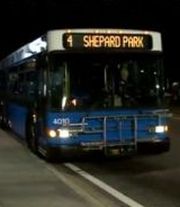SCAT Service Grows To Eighth Largest In Florida
By Space Coast Daily // November 5, 2012
New Evening Service Could Boost Gains Further
BREVARD COUNTY, FLORIDA – October was a record-setting month for Space Coast Area Transit, which has been listed among a federal reporting system as eighth in the state of Florida for ridership, with 22.87 passenger boardings per hour.

Gainesville leads the state with 36.58 boardings per hour, followed closely by Broward County with 36.50.
Miami-Dade, 31.24; Palm Beach Co., 27.56; Lynx, 26.22; Hillsborough, 24.23; and Volusia, 23.36, also lead Brevard in the National Transit Database rankings, which reflect 2011 ridership numbers.
Brevard leads Pinellas County, Jacksonville, Tallahassee, Lee and Sarasota counties and fifteen other transit agencies.
“Our 2012 boardings per hour is 25.52, so we could jump up the listing even further next year,” said Space Coast Area Transit Director Jim Liesenfelt. “Half our routes have seen boardings per hour increase by 60 percent over the past three years. Route 25 (operates between Melbourne and Palm Bay) carries 41 boardings per hour and our Route 4 (SR520 between Cocoa and Cocoa Beach) has 37 boardings per hour. Both of those would fit right in Miami-Dade system and still be an above-average performer.”
Daily boardings, which for the past year have averaged in the 7,000-plus range, have steadily climbed since April to nearly 8,000 daily boardings in October. Three daily boarding records were set in October, including Monday which saw 8,783 boardings, beating the daily records set on Oct. 1 and Oct.3. Liesenfelt said the size of the recent surge in ridership is unexpected, and it’s not known how long it will last, and where it will settle.
“We added evening service in Titusville on Oct. 1. That expansion has contributed to the daily increase,” Liesenfelt said.
Space Coast Area Transit started fixed routes in fiscal year 1991-1992 and has never recorded a year-to-year ridership decrease.
“In fact, we’ve only had five years with an increase of less than 10 percent,” Liesenfelt said. “In our latest survey, we asked if a car was available for the riders’ trip, and 84 percent said no. So, our customers are very transit dependent. But our most common trip purpose is home to work. The ridership gain is part economy, BCC student passes, and that we have reached a level of service that helps get the transit-dependent to and from work, school and shopping.”












